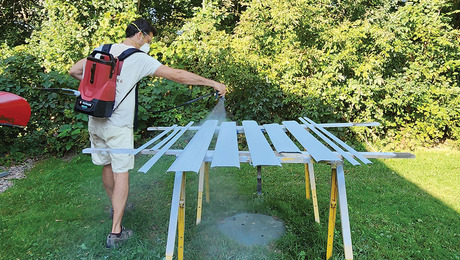*
Am restoring an old motor bike. Some of the frame tubing is elliptical. If I have the major and minor axi (sp) how can I convert that back to a circle in order to see what size tube I need to reproduce the ellipse?
Many thanks
mark
*
Am restoring an old motor bike. Some of the frame tubing is elliptical. If I have the major and minor axi (sp) how can I convert that back to a circle in order to see what size tube I need to reproduce the ellipse?
Many thanks
mark

The Titan ControlMax 1650 cordless backpack paint sprayer is handy for medium-sized projects like a shed.

"I have learned so much thanks to the searchable articles on the FHB website. I can confidently say that I expect to be a life-long subscriber." - M.K.
Get home building tips, offers, and expert advice in your inbox
Fine Homebuilding
Get home building tips, offers, and expert advice in your inbox
© 2024 Active Interest Media. All rights reserved.
Fine Homebuilding receives a commission for items purchased through links on this site, including Amazon Associates and other affiliate advertising programs.
Get home building tips, offers, and expert advice in your inbox
Become a member and get instant access to thousands of videos, how-tos, tool reviews, and design features.
Start Your Free TrialGet complete site access to expert advice, how-to videos, Code Check, and more, plus the print magazine.
Already a member? Log in
Replies
*
42
*Mark: I would take a piece of paper and wrap it around the elliptical tube. Mark exactly this perimeter length. Divide this by "pi" which is 3.14159. This number is the diameter of your round pipe that you will need.
*Stan,Good post. Simple and easy approach to get the answer.
*Mehinks this got a lot of attention last year. Circ. of ellipse of axis a and b, approximately, is 2*pi*sqrt((a^2+b^2)/2); The exact solution = 4 * A* C, where C is an elliptical function (gotten from table of functions or use your Mathcad or MatLab program) with a table constant k = Sqrt(a^2-b^2)/a.Like Ken says, use Stan's method unless you like to use math for fun.
*Thanks.....maths for fun???yeah right!simplicity for me thankyou..Stan, now why didn't I think of that?regardsmark